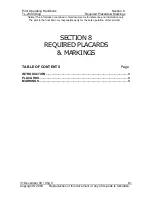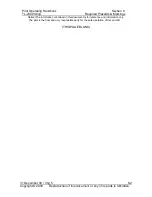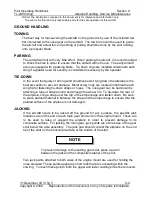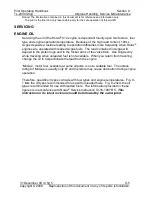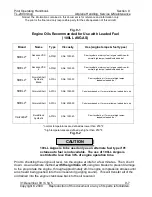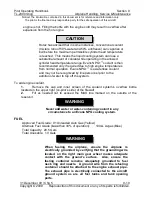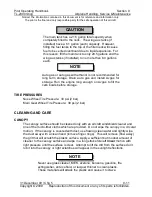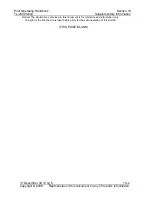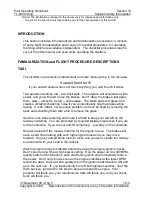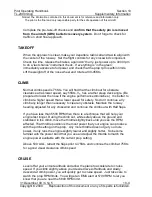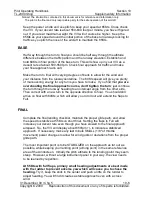
Pilot Operating Handbook
Section 9
TL-2000
Sting
Airplane Handling, Service & Maintenance
Notice! The information contained in this document is for reference and information only.
The pilot is the final and only responsible party for the safe operation of this aircraft.
31 December 09 / Chg 5
9-4
Copyright © 2009 Reproduction of this document or any of its parts is forbidden.
GROUND HANDLING
TOWING
The best way for maneuvering the aircraft on the ground is by use of the included tow
bar connected to the nose gear on the aircraft. The tow bar should be used to guide
the aircraft and actual force of pushing or pulling should be done by the pilot holding
onto a propeller blade.
PARKING
The aircraft will roll with very little effort. When parking the aircraft, it is recommended
to chock the tires in order to ensure that the aircraft will not move. The early aircraft
are not equipped with a parking brake. Tie down rings are installed underneath each
wing if a greater need for security is considered necessary by the operator
TIE-DOWN
In the event that gusty or strong wind conditions exist, tying down the airplane is the
best precaution to prevent damage. Metal screw rings are located underneath each
wing tip for fastening tie-down straps or ropes. The nose gear can be tied down by
attaching a rope or strap around and through the wheel rim. To tie-down the rear of
the airplane, sling a strap over the top of the empennage and fasten down. Be sure
to place padded material in between the strap and the empennage to ensure that the
painted surface of the airplane is not damaged.
JACKING
If the aircraft needs to be raised off the ground for any purpose, the specific jack
locations are on the end of each main gear strut and on the engine mount. These are
to be used to raise or support the airplane in order to prevent damage to its
composite surface. For jacking the main gear, jack points are at the base of the gear
strut below the axle assembly. The jack pad should contact the airplane on the end
tip of the strut on the horizontal surface at the bottom of the strut.
To prevent damage to the landing gear strut, place a pad in
between the jack and the composite material of the strut.
Two jack points attached to both sides of the engine mount are used for holding the
nose elevated. These points appear as short rods that are concealing within the
cowling. To reach these points, both the upper and lower cowlings must be removed.
NOTE






